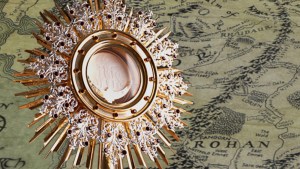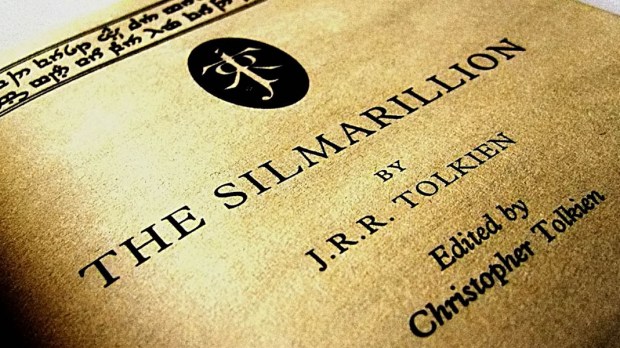The most profound work of J.R.R. Tolkien’s life wasn’t published until after his death. He worked on it laboriously for years, always trying to tweak it and perfect it, never feeling completely satisfied with it. The book he was trying to compile was eventually published under the title of The Silmarillion, and consists of an entire backstory to his popular Lord of the Rings series.
In it, Tolkien narrates a creation story for his fictional realm that is surprisingly consistent with Catholic theology. It is a beautiful commentary on the book of Genesis, in which Tolkien uses mythological language to express fundamental truths about the universe.

Read more:
J.R.R. Tolkien’s fascinating description of purgatory
The Song of Songs
Tolkien begins his creation myth by narrating how the universe (Arda) is “sung” into being. God (Eru) creates several spiritual creatures known as the Ainur, which are similar to angels, and invites them to sing a great song. Eru provides them with an overarching theme, on which they can improvise.
He says to them, “Of the theme that I have declared to you, I will now that ye make in harmony together a Great Music. And since I have kindled you with the Flame Imperishable, ye shall show forth your powers in adorning this theme, each with his own thoughts and devices, if he will. But I will sit and hearken, and be glad that through you great beauty has been wakened into song.”
Yet, in the midst of that Great Music, a discord arose. One of the Ainur, named Melkor, started to weave his own theme into the music. This disturbed the music, creating disharmony, but Eru was able to incorporate Melkor’s music into it, proving that Melkor’s fall from grace would ultimately be used for Eru’s purposes.
Eventually Eru shows the Ainur that their music was essentially a narration of what would come to pass, though they do not see the entire picture.
Interestingly, Tolkien’s close friend C.S. Lewis includes a similar account of song and creation in his book The Magician’s Nephew. There Aslan begins to sing and the world starts to take form, “In the darkness something was happening at last. A voice had begun to sing … It seemed to come from all directions at once … Its lower notes were deep enough to be the voice of the earth herself. There were no words. There was hardly even a tune. But it was beyond comparison, the most beautiful noise he had ever heard.”
Historically the book of Genesis was sung by the ancient Hebrews and still is sung today by many Jews. God told Moses before the people of Israel entered the Promised Land, “Now therefore write this song, and teach it to the people of Israel; put it in their mouths, that this song may be a witness for me against the people of Israel” (Deuteronomy 31:19).
This verse is frequently interpreted as the entire Torah, the books of Genesis, Exodus, Leviticus, Numbers, and Deuteronomy. In this case, the many works of God are described as a song and God instructs Moses to write it down for everyone to sing.
A Living Heart of Flame
After this episode, Tolkien explains how Eru initiates the creation of earth by saying, “‘Eä! Let these things Be! And I will send forth into the Void the Flame Imperishable, and it shall be at the heart of the World, and the World shall Be; and those of you that will may go down into it.’ And suddenly the Ainur saw afar off a light, as it were a cloud with a living heart of flame; and they knew that this was no vision only, but that Ilúvatar had made a new thing: Eä, the World that Is.”
Tolkien uses Catholic imagery to describe a “living heart of flame” that exists at the center of the world. It is not difficult to see a connection between that image and the traditional depiction of the Sacred Heart of Jesus, the ultimate sustainer of the universe.
Similarly, Tolkien describes a “Flame Imperishable,” that goes into the “Void” to create the world. One can not help but hear the words of Genesis, “The earth was without form and void, and darkness was upon the face of the deep; and the Spirit of God was moving over the face of the waters” (Genesis 1:2).
In the end, while The Silmarillion isn’t a strict biblical commentary, it remains a profound spiritual reflection in the form of a fictional narrative. It can enrich a person’s view of creation and provide rich material for meditation.

Read more:
J.R.R. Tolkien’s epic cure for frustration, depression, and doubt

